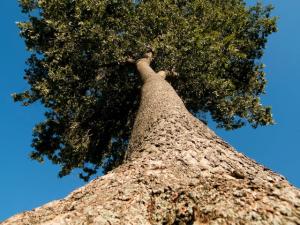Did you know that trees hold spiritual relevance across religious lines? Throughout the world, trees are important symbols of religious faith, inspiration, and spiritual devotion. With the upcoming observance known as Arbor Day, people worldwide stop and pause to consider the value and necessity of planting trees. Dating back to Spain in 1594, Arbor Day reminds us all that trees are an important of our ecological system. In a spiritual sense, trees teach several different values to people of various faith traditions. In honor of this upcoming observance, let’s learn about the role trees play in different faith traditions worldwide.

Judaism
The Israeli version of Arbor Day is Tu B’shevat, celebrated in either January or February. Jews see trees as symbols of growth and renewal. Among unique beliefs, Jews treat them with regard, as they are living beings. They provide illustration of the connection between human beings and the natural world. Jews call the Torah (first five books of the Bible) the “Tree of life.” Within its contents, the Torah contains a number of stories about trees, including:
- The tree of knowledge in the Garden of Eden (Genesis 3:7)
- The tree of Life (Genesis 3:22)
- The olive tree that grew after the great flood (Genesis 8:11)
- The tree where Jacob buried Shechem’s treasure (Genesis 35:4)
- The Burning Bush, by which God spoke to Moses (Exodus 3:2)
- The tree that turned the waters of Marah sweet (Exodus 15:24)
- The 70 palms (Exodus 15:27)
- The command to plant trees as part of ecology and economy (Leviticus 19:23-25)
Tradition states parents used to plant trees in honor of the birth of their children. They honored the hopes and dreams parents had for their children. Later, the wood from such was used for the chuppah, or wedding canopy. Today, Israelis plant a tree for every baby born in Israel.
Christianity
Trees are of particular meaning for Christians because Scripture compares our spiritual lives to them. With the call to bear fruit comes the analogy that Christians are, by their nature, supposed to represent the life of a tree in a spiritual sense. Did you know the Bible mentions at least 36 different types of trees? it’s no accident that Christians review their spiritual identity through the health – or illness – of various trees. Second to God and humans, trees are mentioned more than any other living being. This calls us to pay attention.
Some of the most important things we know in connection between our faith and trees:
- Every major Bible character (and some secondary ones) is introduced in conjunction with a tree (Genesis 8:11, Genesis 18:1, Genesis 49:22, Exodus 3:2–5, Luke 19:1–4, Mark 8:24, Luke 22:39, Romans 1:20, Romans 11:17-18)
- Jesus compares the Kingdom of God to be like a tree (Matthew 13:31–32)
- The only thing Jesus directly cursed – and we saw the results – was a tree (Mark 11:12–14, 20–21)
- Jesus Christ was crucified on a tree (Acts 5:30, 10:39, and Galatians 3:13)
- A secondary note, after rising from the dead, Jesus was mistaken for a gardener (John 20:15)
- Revelation speaks of 12 trees with leaves to heal the nations (Revelation 22:1–2)
- The last image of Jesus in the New Testament is as “the root and descendant of David” (Revelation 22:16)
Islam
Among some primarily Muslim countries, tree planting is an annual practice. In Iran, National Tree Planting Day is usually somewhere around March 5. Pakistanis hold National Tree Plantation Day on August 18. In Egypt, Arbor Day is January 15. In Saudi Arabia, the date is April 29.
Within the Qur’an, trees symbolize concepts, ideas, and codes related to life. Planting trees is an act of charity known as sadaqa. Trees are to be treated respectfully, without deliberate harm. As a spiritual symbol, they are also used to illustrate things in the natural realm as well as the afterlife. Most especially, devout Muslims are compared to trees, especially those which flourish.
Some other references to trees in Islam include:
- Fresh dates from a palm tree were given to Mohammed when he used the palm tree to describe a devout Muslim (Tirmidhi 48.96)
- A date palm is planted for devout believers in Paradise (Jamil at Tirmidhi 3465)
- he tree of Az-Zaqqum is a bitter, pungent tree that grows in the bottom of hell (Sahih al-Bukhari 4716)
- Mentioned along with the rest of creation, trees also bow before Allah (Surah Al-Hajj 18)
- Trees are a specific sign of Allah’s existence
Buddhism
Various Buddhist nations hold Arbor Day throughout the year, including Cambodia (July 9), Taiwan and China (March 12), Japan’s Greenery Day (May 4), and Sri Lanka (November 15),
Among Buddhists, trees hold special meaning. It was under a Bodhi tree (“tree of enlightenment) that Buddha first achieved enlightenment. This important symbol reminds Buddhists they too can achieve a state of nirvana if they follow the Buddha’s teachings. Bodhi trees are unique to India and grow wide trunks (up to nine feet in diameter) and strong roots to withstand monsoons.
The birth and death of the Buddha also involve trees. The Queen Maya gave birth to the Buddha under a sal or ashoka tree in Nepal. Four other Buddhas in history (Mangala, Sumana, Revata and Sobhita) achieved enlightenment under the Naga tree. Trees and especially leaves are also used by Buddhists to illustrate spiritual stories; short, memorable fables and stories that help Buddhist believers focus on their ultimate goal: enlightenment.
Hinduism
In the nation of India, Van Mahotsav is an annual tree planting festival observed both within the country itself and by its international descendants. It’s a week-long observance held in July every year.
Hindus see trees as reflecting the cycle of life; both natural and spiritual. The Tree of Life, in Hinduism, represents the meeting of earth and divinity. Trees are vital for life, and often associated with various teachers and deities throughout history. Every tree has a tree deity, and each one is worthy of worship and offerings. Most specifically, Hindus associate trees with their idea of the trinity (Brahma, Vishnu, and Shiva) represented by its different parts (roots, trunk, and leaves). Therefore, fruits, leaves, and some tree flowers are used as part of many Hindu rites, rituals, and offerings.
We can see that trees hold great meaning within Hindu practice. Some of particular importance include:
- Banyan tree: Fertility and life
- Bel tree: Associated with Shiva
- Pipal tree: Represents the entire universe (roots=absolute reality, leaves=material world)
How can you celebrate Arbor Day?
There are many differences in religious belief around the world. One of the most interesting religious studies is the way different symbols translate to expound upon different spiritual themes. Trees are no different. Whether you’re eager to get out and plant many trees or are more interested in subtle gardening or shrubs, think about what trees mean within your belief system this Arbor Day.

















